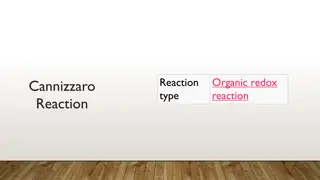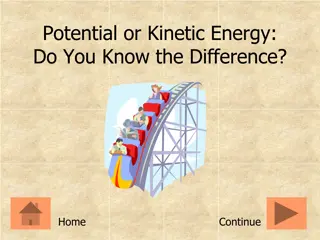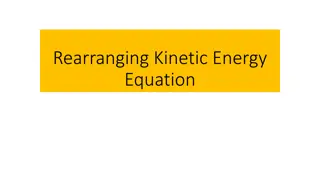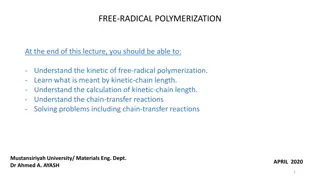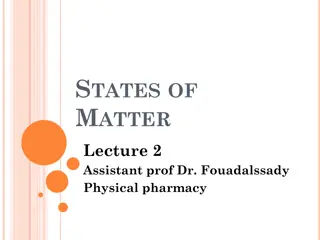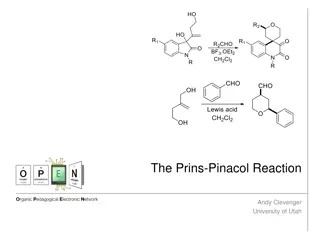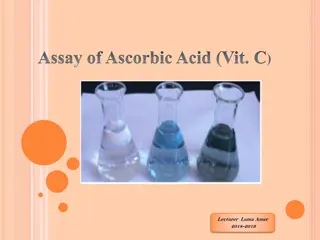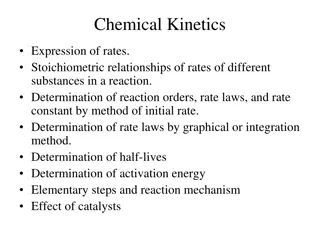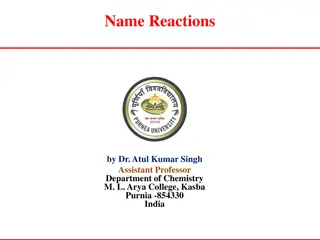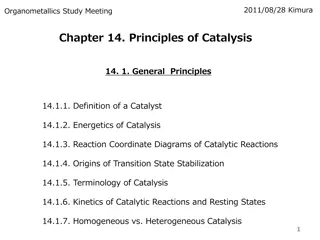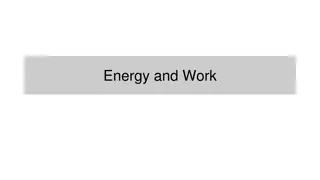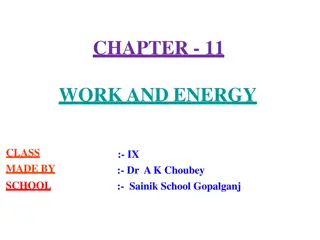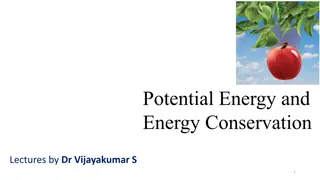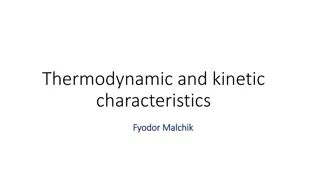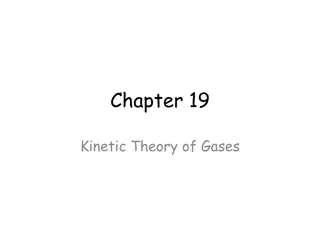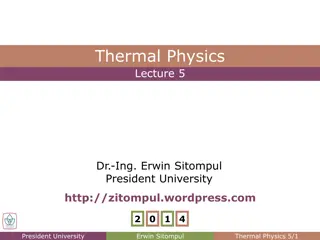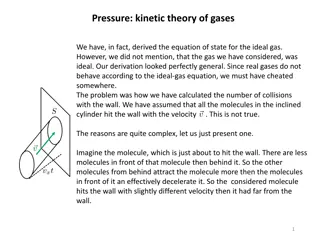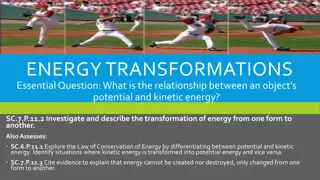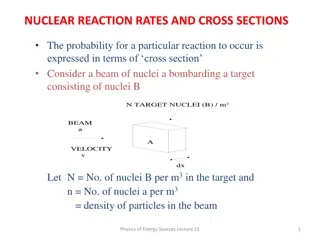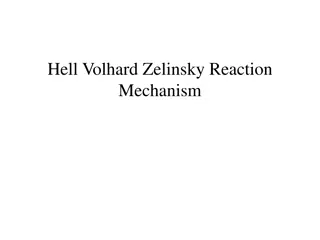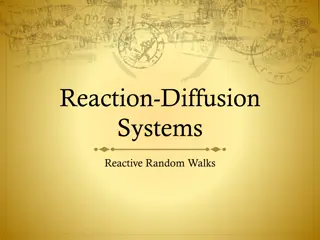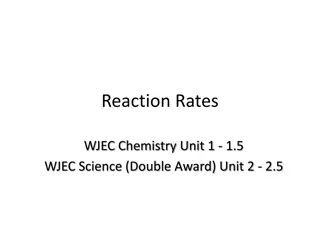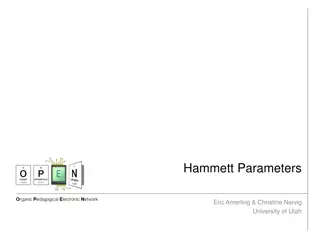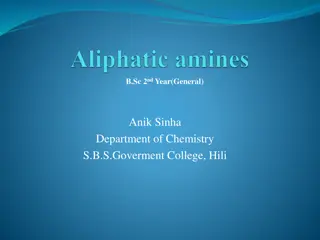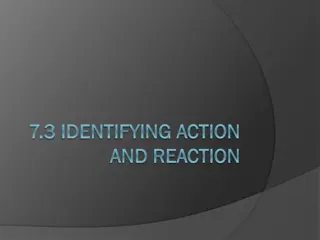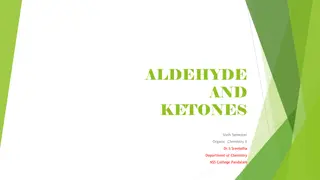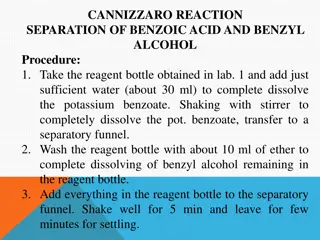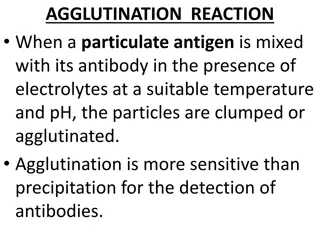Kinetic Reaction of Sulphite and Iodate - Landolt Reaction Overview
The kinetic reaction of sulphite ions and iodate in the Landolt reaction is a fascinating chemical process where slow and fast reactions occur sequentially, resulting in a visually striking color change. By monitoring the induction period between the two reactions, one can observe the formation of hydrogen iodide, iodine, and a starch-complex creating a deep blue color. This reaction involves chemicals like potassium iodate, sodium sulfite, and safety precautions must be adhered to when handling these substances.
Download Presentation

Please find below an Image/Link to download the presentation.
The content on the website is provided AS IS for your information and personal use only. It may not be sold, licensed, or shared on other websites without obtaining consent from the author. Download presentation by click this link. If you encounter any issues during the download, it is possible that the publisher has removed the file from their server.
E N D
Presentation Transcript
Kinetic Reaction of Sulphite ions and Iodate, Landolt Reaction Muaathe A Ibraheem Chemistry department, College Of Sciences University of Diyala
Theory It is possible to monitoring a slow reaction if it is fellow by a very fast one. The period between the starting the first reaction and the second one named the induction period. The example of this system is Landolt reaction or clock reaction. Where Sulphite ions react with Iodate ions to produce Hydrogen Iodide , which will oxidized with the excess of Iodate ions to form Iodine. In Presence of starch solution a deep blue colour will form as a result of complex between Iodide and Starch.
+ ??3 ?? + 3?2??4 .. 1 ???? ???????? 3???3 3?2+ 3?2? 2 ???? ???? 5?? + ??3 It Its important to state that if the sulphite ions do not consumed, I2 will reduce by Sulphite ions. + ?2 ? + ???4 + 2?+ ???3
Chemicals Potassium iodate (KIO3) Sodium sulfite (Na2SO3) Ethanol (C2H5OH) Concentrated sulfuric acid (H2SO4) Transparent dishwashing liquid Starch Deionized water
Equipment: Equipment: Two 500-mL volumetric flasks Three 100-mL volumetric flasks Measuring cylinders Beer mug (500 mL) Coca Cola bottle (500 mL) (preferably a glass bottle) Four empty mineral water bottles or four 300-mL beakers
Safety: Safety: Potassium iodate (KIO3): H272 May intensify fire, oxidizer. H315 Causes skin irritation. H319 Causes serious eye irritation. H335 May cause respiratory irritation. P220 Keep/Store away from clothing/combustible materials. P261 Avoid breathing dust/fumes/gas/mist/vapors/spray. P305 + 351 + 338 IF IN EYES: Rinse cautiously with water for several minutes. Remove contact lenses if present and easy to do. Continue rinsing.
Safety Safety Concentrated sulfuric acid (H2SO4): H314 Causes severe skin burns and eye damage. H290 May be corrosive to metals. H272 315 319 335, P220 261 305 + 351 + 338 H314 290 P280 301 + 330 + 331 310 305 + 351 + 338 H225 P210 P280 Wear protective gloves/protective clothing/eye protection/face protection. P301 + 330 + 331 IF SWALLOWED: Rinse mouth. Do NOT induce vomiting. P310 Immediately call a POISON CENTER/doctor/ . P305 + 351 + 338 IF IN EYES: Rinse cautiously with water for several minutes. Remove contact lenses if present and easy to do. Continue rinsing.
Safety Ethanol (C2H5OH): H225 Highly flammable liquid and vapor. P210 Keep away from heat, hot surfaces, sparks, open flames and other ignition sources. No smoking.
Procedure Prepare (0.02M) of KIO3 (MW: 214.001) and (0.01M) of Na2SO3 (MW: 126.043) solutions. In 100 ml volumetric flask transfer 25ml of starch solution ,20ml of sulfuric acid and 10 ml of sodium sulphite solution then filled the flask to the mark with a distilled water Divide the prepared mixture in step 2 onto four portions as the table below. Mixtur e No Volume of SO3 Mix Volume of water Volume of KIO3 ml C : Final Conc. Of SO3 Time sec R= C/T Log C Log R 1 2 3 4 25 20 15 10 50 55 60 65 25 25 25 25 Note C is the final concentration of SO3 of each portion (mixture) Draw by excel a graph between Log C (x-axis) and Log R(y axis) and determine both the reaction constant k and the degree of the reaction (n), where k will be the intercept and the slope represents (n).



